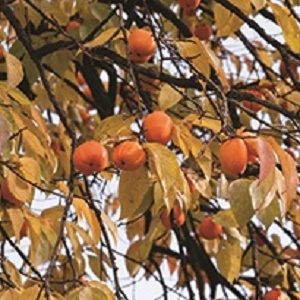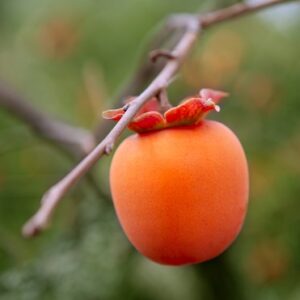AMERICAN PERSIMMON 30-60cm (12-24") On Own Root
$29.95
Seeding persimmons are either male or female. Only the females bear fruit, which is how to tell them apart. Like any other seedling, some variation in fruit quality, size and ripening time can be expected. However, they do have the advantage of being more hardy than a grafted tree.
1 gallon pot
PLANT SEVERAL | ZONE 4 | HARVEST: OCT.-NOV.
Rootstocks
G41 Dwarf
G935 Small Semi-Dwarf
G969 Small Semi-Dwarf
G30 Semi-Dwarf
G890 Semi-Dwarf
Pollenator definitions
NEEDS A POLLENIZER ̶ means another tree of the same type or kind but a different variety must be blooming nearby at the same time.
EXAMPLE A Liberty apple and a Wealthy apple can cross-pollinate. Two trees of the same variety ie: ̶ 2 Wealthy apples, cannot cross pollinate because they are genetically identical.
Other trees are marked as SEMI-FERTILE. These will set fruit without a second tree. However they will often bear more, and sometimes larger fruit if another variety of the same kind of tree is nearby.
You can select 2 different trees of the same kind marked as NEEDS A POLLENIZER or plant one of those along with one SELF-FERTILE or one SEMI-FERTILE. Also consider ripening times ̶ a Goldrush apple might not start blooming before a Pristine is finished.
Other products in this zone
Growing Tips
Plant your persimmon trees in a well-drained, sunny location, but don’t let them dry out. After you have successfully started them, persimmons are extremely easy to grow and care for.
Seedlings may eventually reach a mature height of 15m (50') while grafted varieties usually remain considerably smaller, usually only 5-9m (16-30').
NOTE ON DELAYED LEAFING: Be patient with Persimmons. They are usually the last to break dormancy. Watering them while dormant will not help, it can even hurt the roots, if overdone. They simply need lots of heat to wake up, so in a cool spring it could take a month or even longer yet.
In most cases, we recommend planting bareroot fruit trees at their permanent site as soon as you get them. However, the trees in this section of the catalogue (Pawpaws, Persimmons and Jujubes) will often benefit from spending a few more years in a pot. Since these species do not take as well to bareroot handling, we receive them as very small trees in pots. We suggest you repot them in a 2 or 3 gallon container and grow them for several seasons. Pawpaws in particular, will appreciate this, as the tender young trees will prosper much more if you can keep them out of direct sunlight. This way you also have the option of overwintering them in your garage until they are bigger and stronger.
See Page 80 for 3 gallon Root Trapper® Containers.




